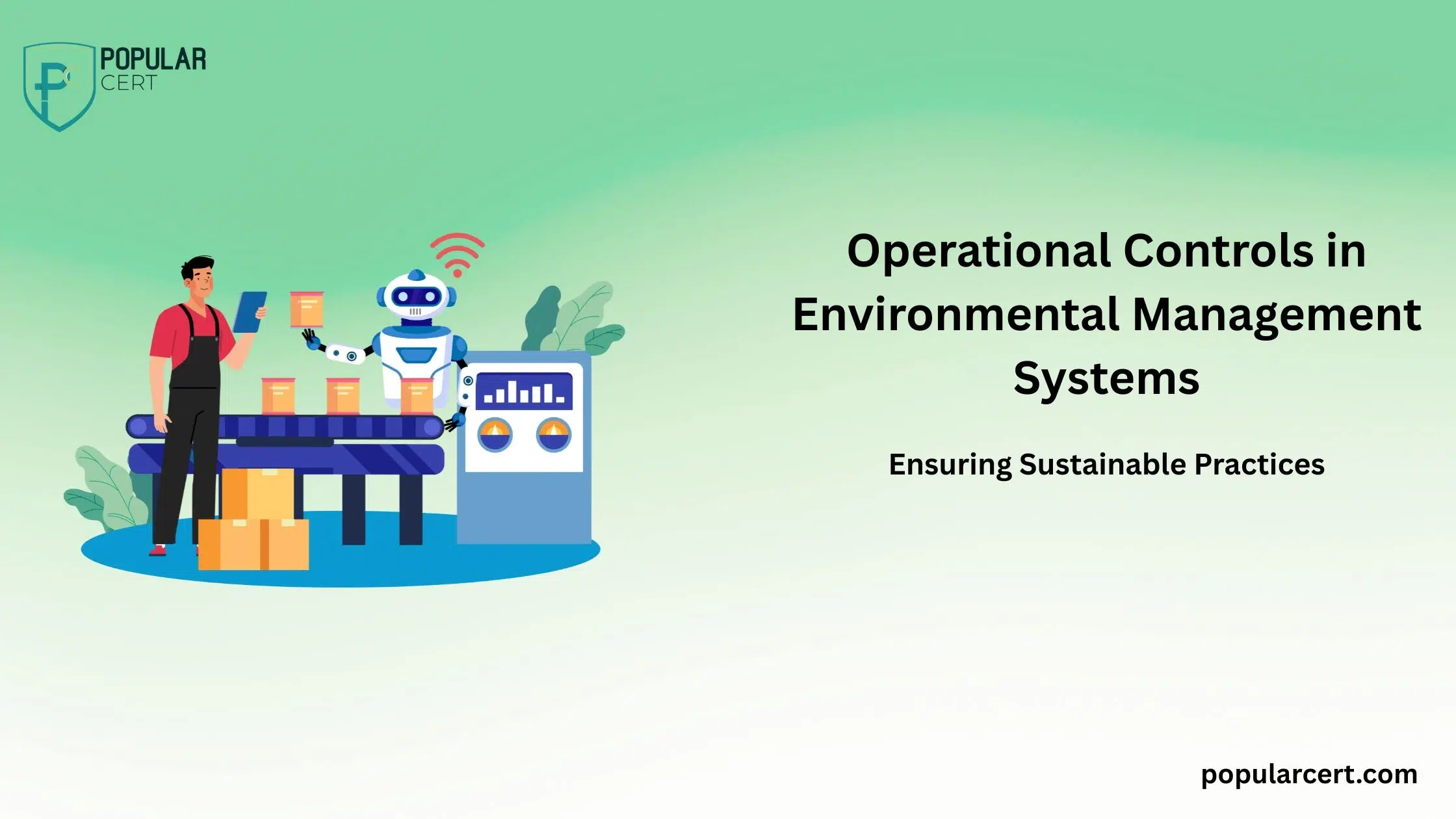Operational Controls in Environmental Management Systems: Ensuring Sustainable Practices

Operational controls are essential in an Environmental Management System (EMS) to ensure compliance, minimize environmental impact and promote sustainable practices. Clause 8.1.2 and 8.1.3 of ISO 14001 focus on identifying, implementing and maintaining operational controls necessary for managing environmental aspects effectively. These controls help organizations prevent pollution, meet compliance obligations and drive continual improvement while considering a life cycle perspective.
Identifying needs for operational controls
An organization can use operational controls to:
- Manage identified significant environmental aspects.
- Ensure fulfilment of compliance obligations.
- Achieve environmental objectives and ensure consistency with its environmental policy, including the commitment to protection of the environment and the prevention of pollution and continual improvement.
- Avoid or minimize adverse impacts to the environment or adverse effects to the organization.
- Maximize opportunities.
Based upon the scope of its environmental management system and the actions determined, the organization should determine the necessary operational controls, using a life cycle perspective, including for operations related to functions, such as research and development, design, sales, marketing, procurement and facility management.
The type and extent of control or influence to be applied during the life cycle stages should be defined within the environmental management system.
A life cycle perspective should be considered as early as possible, i.e. in the design and development process. This will provide a better opportunity to make improvements to the overall environmental performance of activities, processes, products or services, and help the organization reduce the potential for transferring adverse environmental impacts to other stages. This will result in greater value to the organization and protection of the environment.
Many organizations can have their significant environmental aspects in the use phase or in the application of information provided by the organization. Examples of methods to influence significant environmental aspects could then include:
- Providing education on how to manage relevant environmental impacts.
- Providing easy access to information (e.g. on websites, like FAQ’s).
- Establishing user groups for sharing information and keeping users updated.
As applicable, the organization should consider how external providers and outsourced processes can affect its ability to manage its environmental aspects and fulfil its compliance obligations. An organization should establish operational controls that are needed, such as documented procedures, contracts or supplier agreements, or end user instructions, and communicate them to its contractors, suppliers and users, as appropriate. An outsources process can be subject to control or influence. An outsourced process is one that fulfils all of the following criteria:
- The function or process is integral to the organization’s functioning.
- The function or process is needed for the management system to achieve its intended outcome.
- The liability for the function or process conforming to requirements is retained by the organization.
- The organization and the external provider have an integral relationship, e.g. one where the process is perceived by interested parties as being carried out by the organization.
Establishing operational controls
Operational controls can take various forms, such as procedures, work instructions, physical controls, use of competent personnel, or any combination of these. The choice of the specific control methods depends on a number of factors, such as the skills and experience of people carrying out the operation and the complexity and environmental significance of the operation itself. An organization can choose to plan and establish processes to enhance its ability to implement controls in a consistent manner.
Types Of Certification
- ISO Certification
- ISO 9001 Certification
- ISO 14001 Certification
- ISO 45001 Certification
- ISO 22000 Certification
- ISO 27001 Certification
- ISO 17025 Certification
- ISO 13485 Certification
- ISO 20000-1 Certification
- ISO 22301 Certification
- ISO 50001 Certification
- ISO 37001 Certification
- IATF 16949 Certification
- ISO 29001 Certification
- ISO 31000 Certification
- ISO 20121 Certification
- ISO 10002 Certification
- ISO 41001 Certification
Get Free Consultation
Our Clients


















A common approach to establishing operational controls can include:
- Choosing a method of control.
- Selecting acceptable operating criteria, e.g. operating features of machines and measurements or weight or temperature.
- Establishing processes, as needed, that define how identified operations are to be planned, carried out and controlled.
- Documenting these processes, as needed, in the form of instructions, signs, forms, videos, photos, etc.
- Applying technological options, such as automated systems, materials, equipment and software.
Operational controls can also include provisions for measurement, monitoring and evaluation, and for determining whether operating criteria are being met. Once operational controls have been established, the organization should monitor the continuing application and effectiveness of these controls, as well as plan and take any action needed.
Conclusion
Operational controls are critical for an effective EMS, helping organizations mitigate environmental risks, comply with regulations and promote sustainable practices. By identifying control needs, implementing structured measures and continuously monitoring performance, organizations can achieve their environmental objectives while driving long-term efficiency.
Call To Action
Boost your organization’s credibility with ISO 14001 certification! PopularCert provides expert guidance to help you achieve environmental compliance and business success. Get in touch with us today to get started!
GET A FREE CONSULTATION NOW
FAQ
Why are operational controls important in an EMS?
Operational controls help organizations manage environmental aspects, comply with regulations and minimize pollution, ensuring long-term sustainability and regulatory adherence.
How can organizations ensure effective operational control implementation?
Organizations can use documented procedures, training, technology and continuous monitoring to establish and maintain effective operational controls
What role does a life cycle perspective play in operational controls?
A life cycle perspective ensures that environmental impacts are considered at every stage, from design to disposal, allowing for proactive sustainability measures
